Lancia Rally 037 Stradale
In the summer of 1979, the FIA as the highest motorsports authority, announced the rules of the so-called Group B, according to which sporting GTs, sports saloons and compact cars were to compete in the World Rally Championship from 1982 onwards, provided at least 200 units were sold as street versions. In addition, according to similar regulations, circuit vehicles should also be created for the sports car championship. However, only Porsche with the 961 based on the 959 and Ferrari with the 288 GTO seriously pursued this section of the regulations and therefore ultimately dropped it. The rally monsters of the Group B era, on the other hand, are known to this day and are revered wherever an opportunity arises. Among the best known are the offshoots of the Audi quattro, the Peugeot 205 T16, the MG Metro 6R4, the Ford RS200 and, in addition to the Lancia Delta S4, its predecessor, the Lancia Rally 037. The latter was one of the last successful rally cars without permanent four-wheel drive. At least on dry asphalt the powerful mid-engined sports car could hold a candle to the Audi quattro. In addition the story fits that the Fiat Group particularly ordered some lorries with road salt from Italy for the Rallye Monte Carlo 1983 to clear the mountain passes, whereby on the following day suddenly dry asphalt roads were to be found and the Lancias could win easily.
The development of the 037 began shortly after the new regulations were announced. Together with Abarth and Pininfarina, an extraordinary mid-engined car was created on the basis of the passenger cell of the Lancia Beta Montecarlo with bolted subframes at the front and rear as the ‘Abarth Project SE037′. Thanks to double shock absorbers on each wheel and the use of only two different bolt sizes on all major components, which enabled faster service maintenance, was made for rally use. Behind the passengers, a two-liter four-cylinder engine from the Fiat 131 Abarth was installed, which was given more power by means of a Roots-like Volumex supercharger. In the road version required by the regulations it was 151 kW/205 hp, the rally version started with at least 228 kW/310 hp. For power transmission, the same ZF five-speed gearbox was used, which could also be found in the De Tomaso Pantera. Lancia produced a total of 200 road vehicles, 17 rally cars of the original version and 20 rally cars each in stages Evolution 1 and Evolution 2. The official homologation took place in April 1982, followed by several test runs in the same year. It was not until 1983 that Lancia entered the full World Championship with Walter Röhrl and Markku Alén winning the Constructors’ World Championship. Had Walter attached more importance to the title, he would have been able to win his third as a driver after 1980 (with Opel) and 1982 (with Fiat), but he didn’t and so he skipped some rally events of that year.




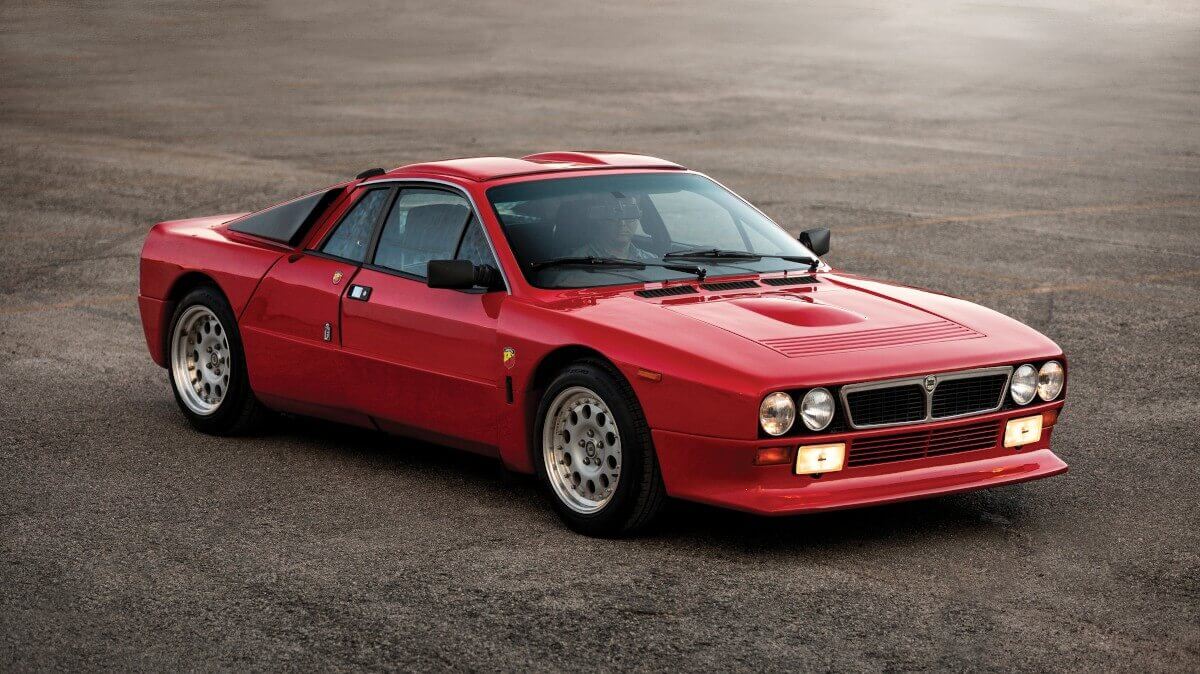



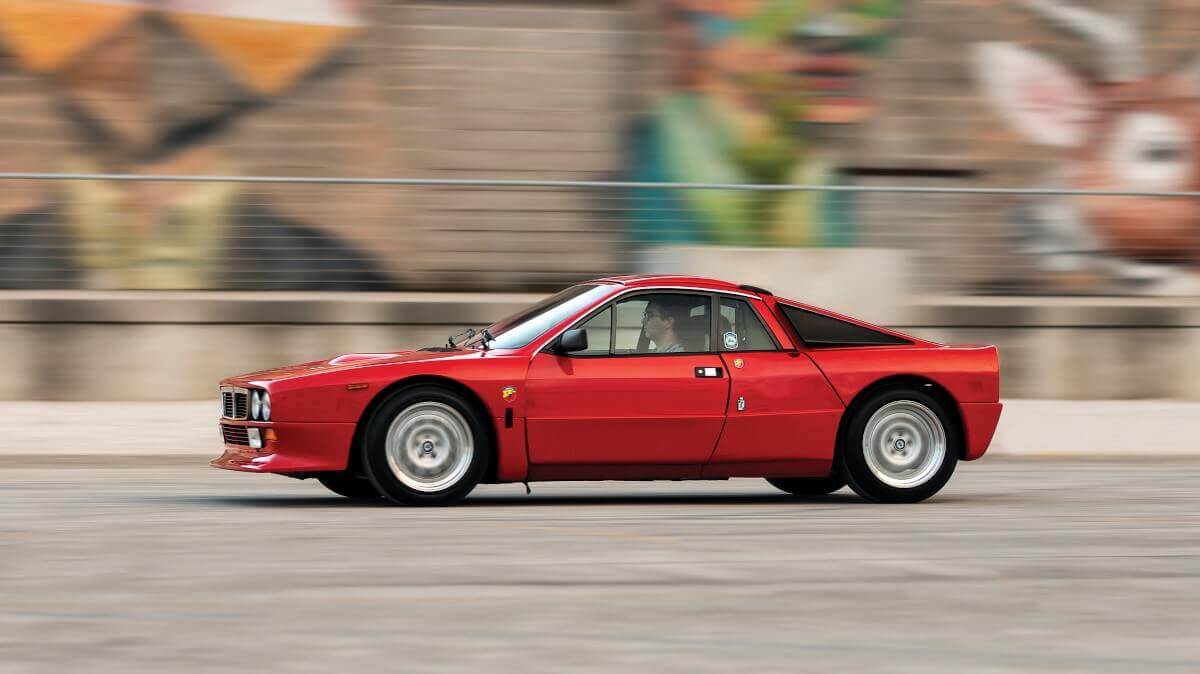



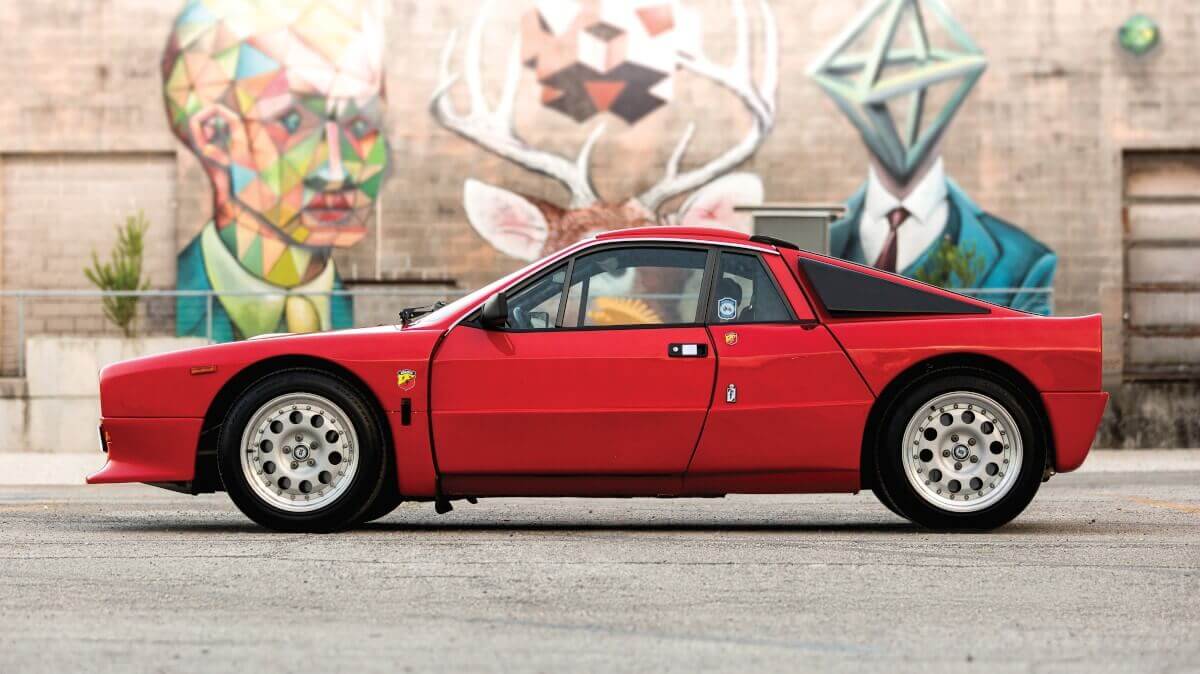



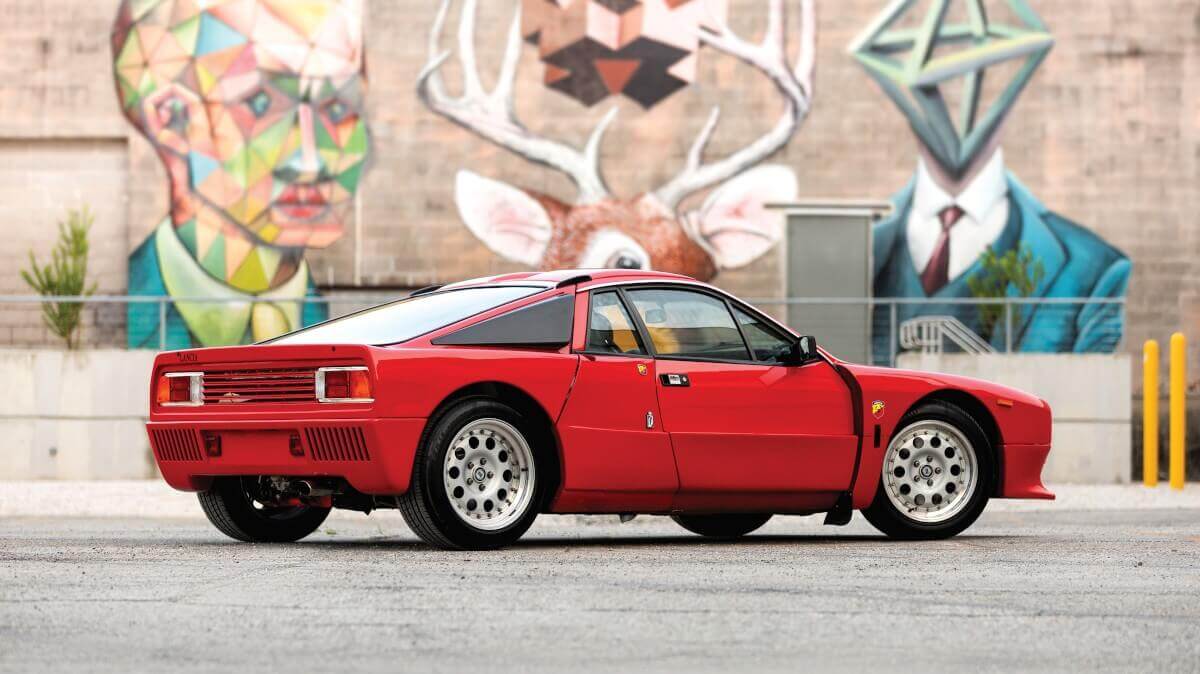



















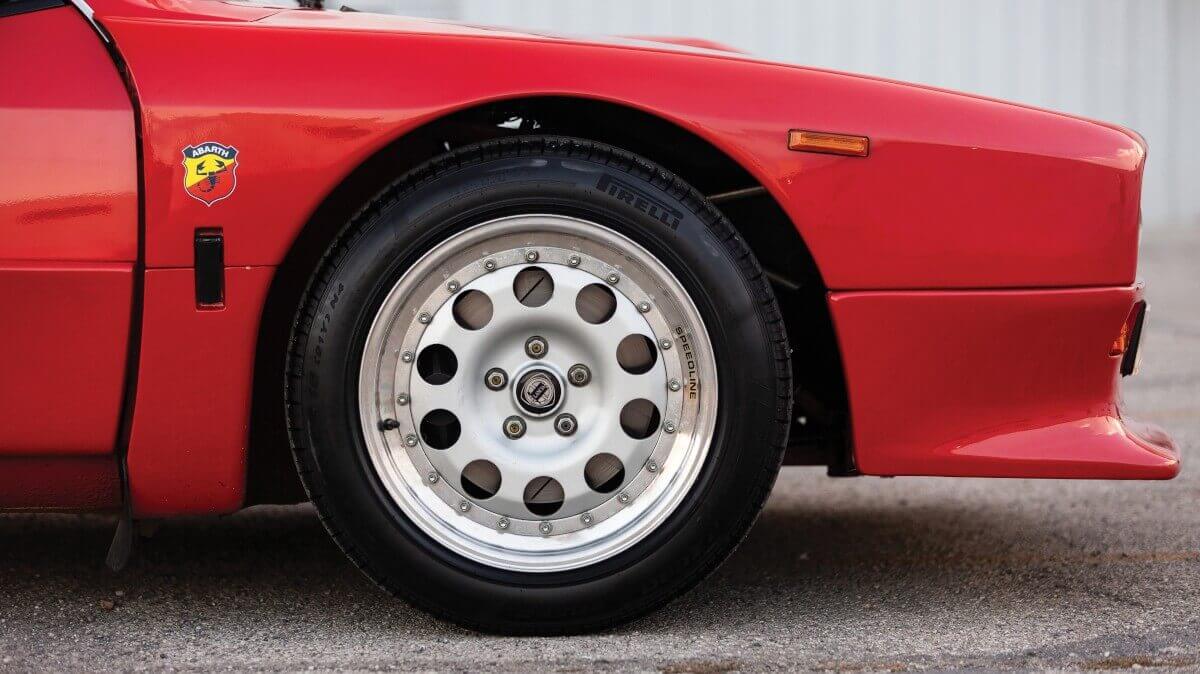







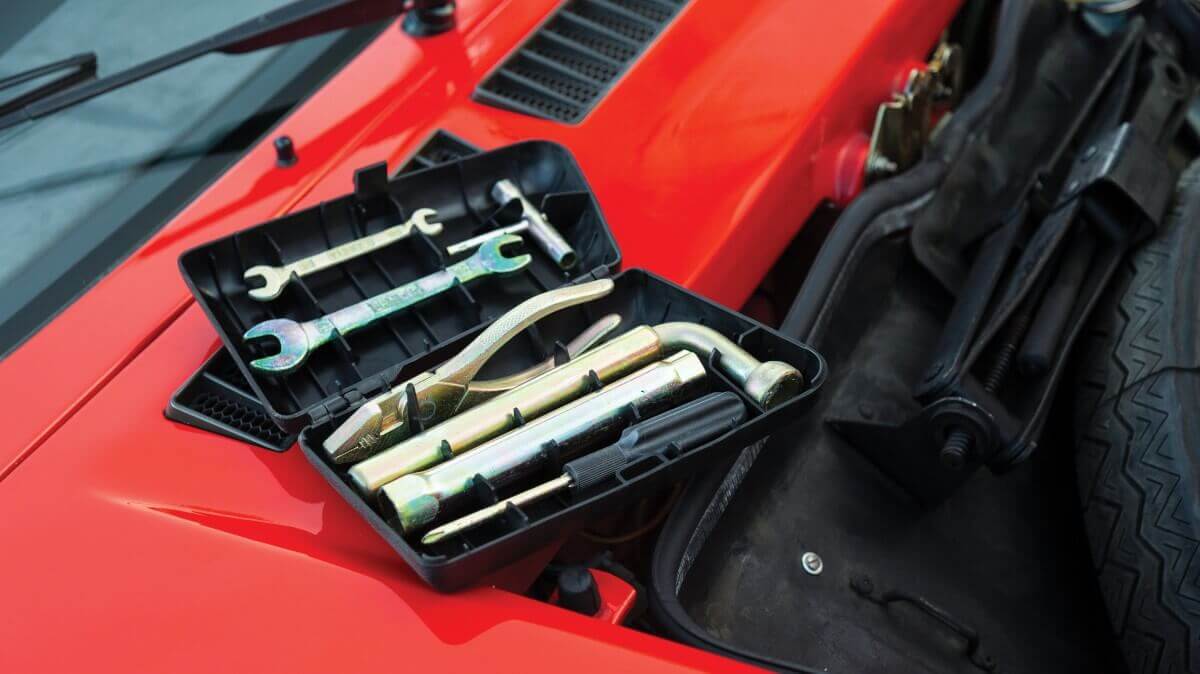



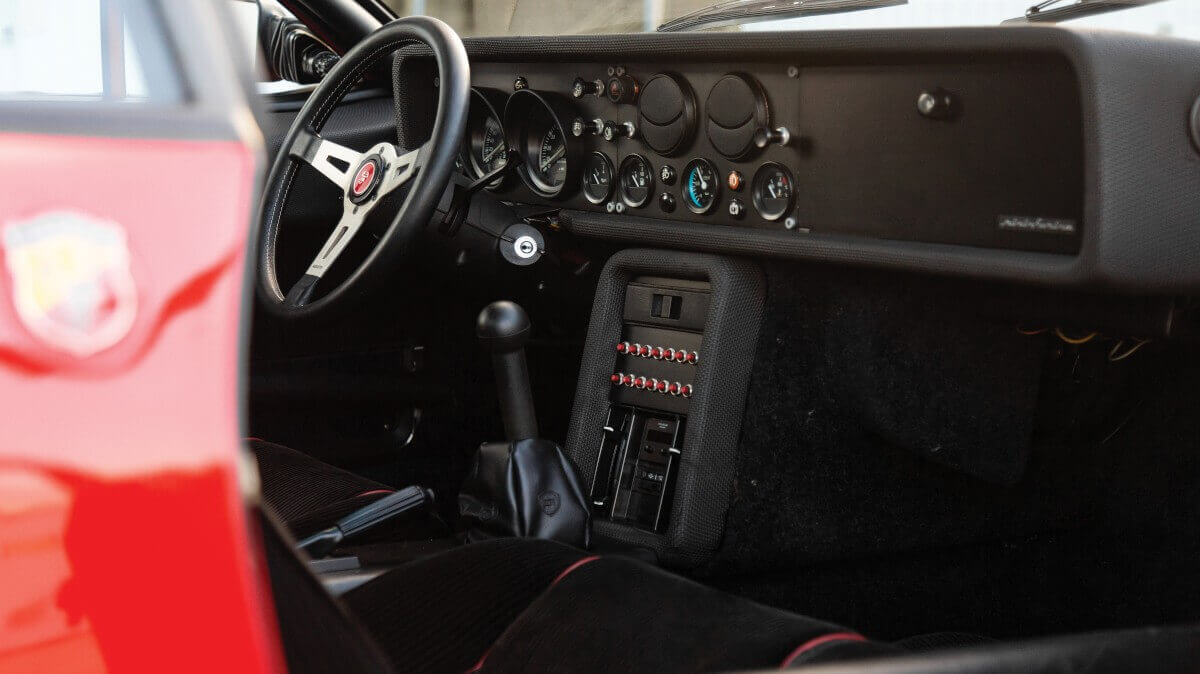







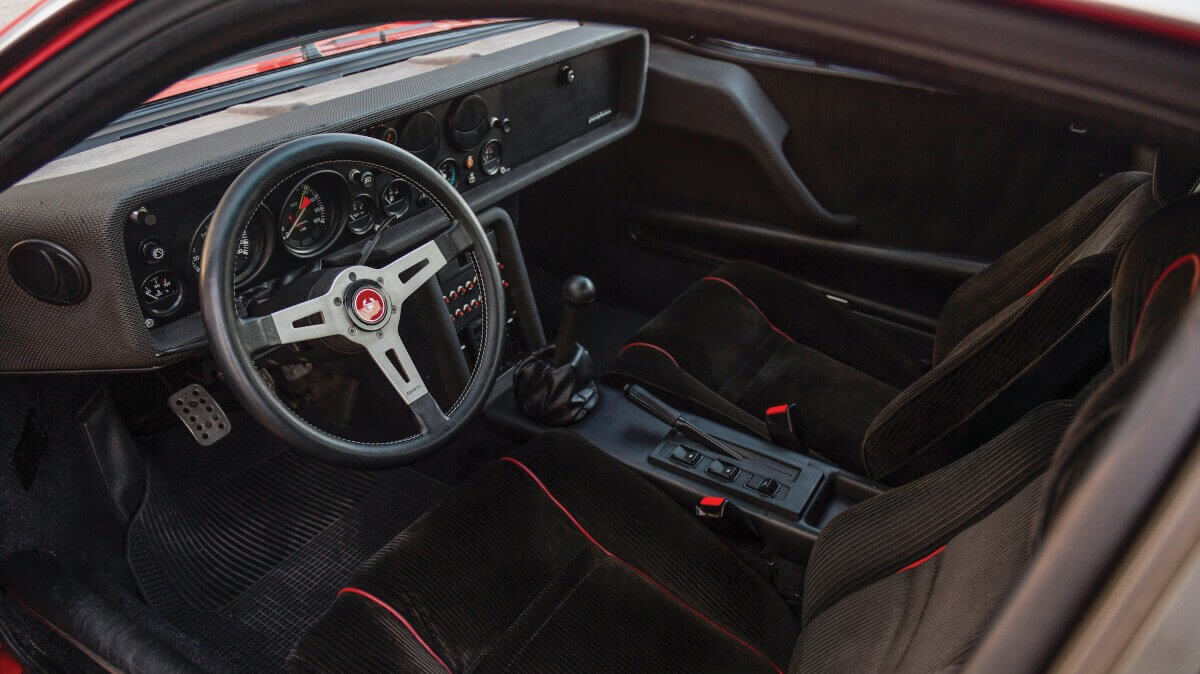







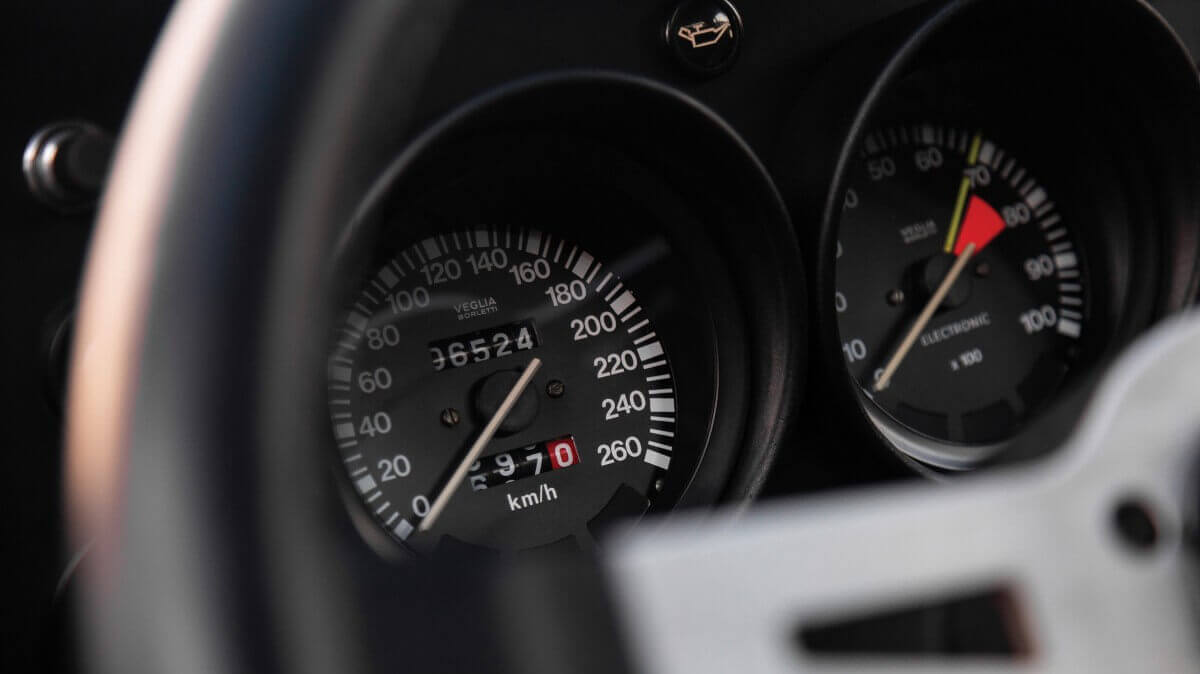











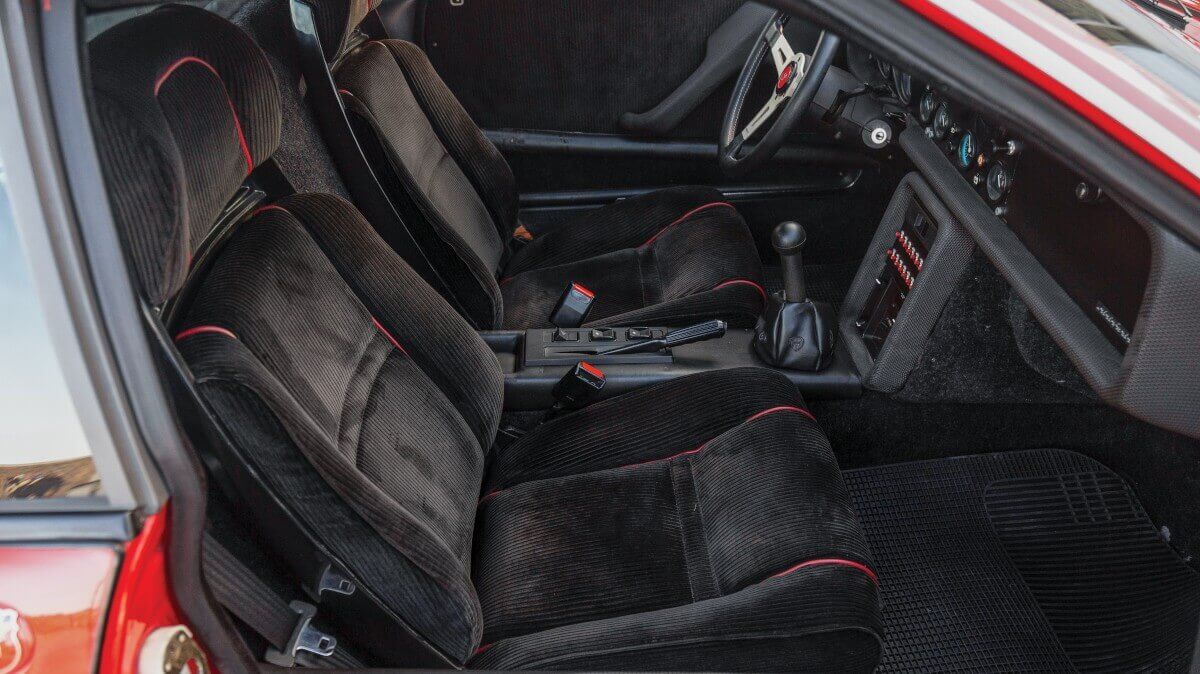



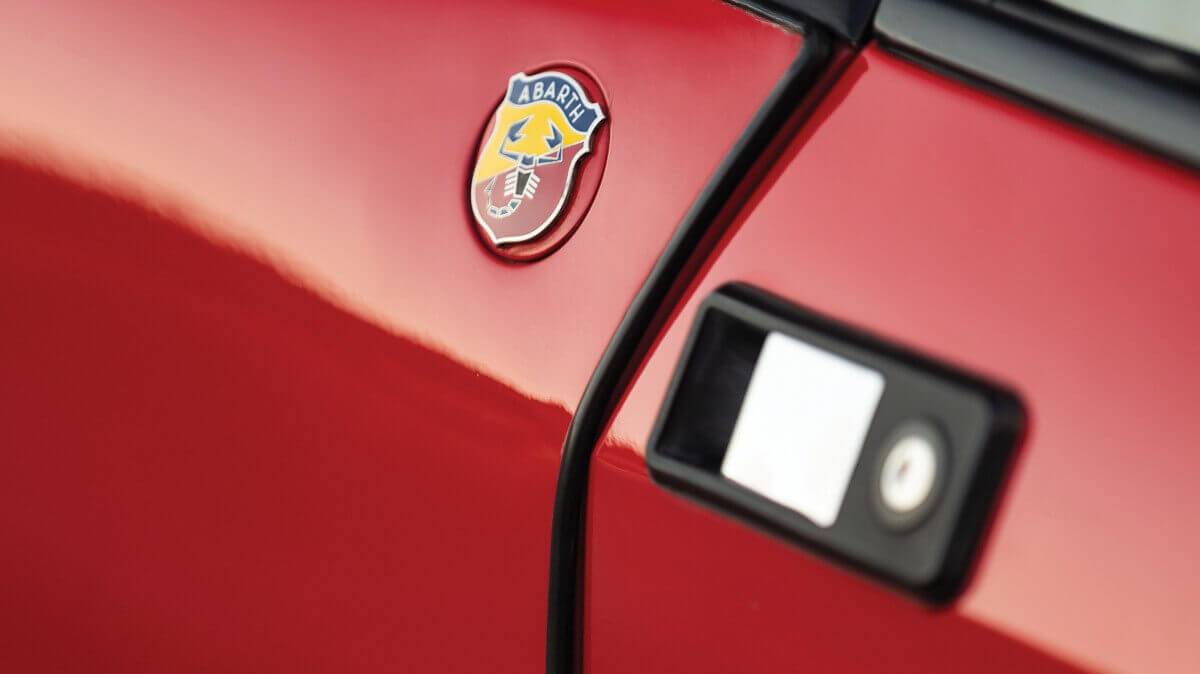



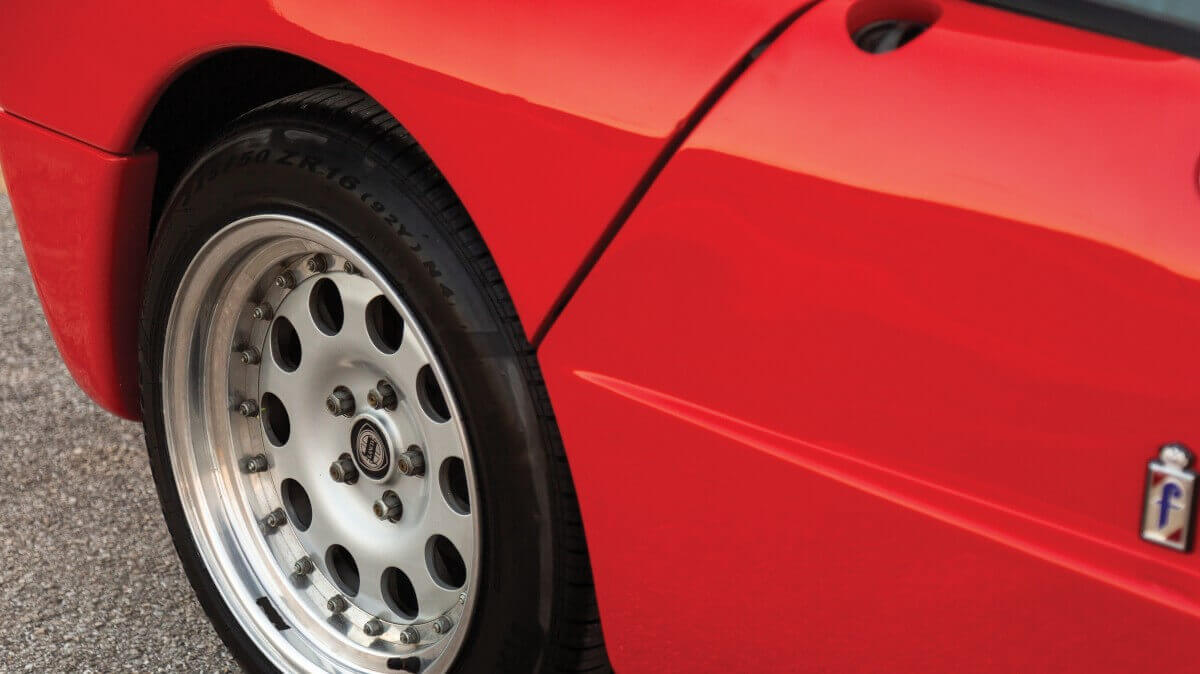







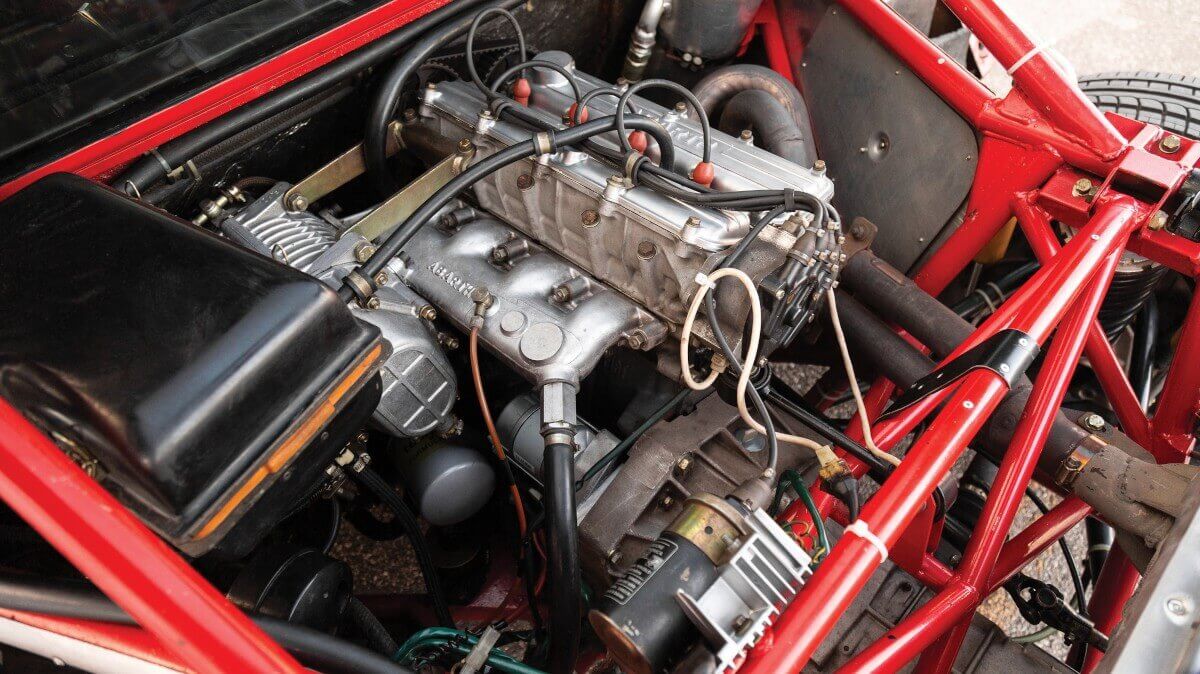



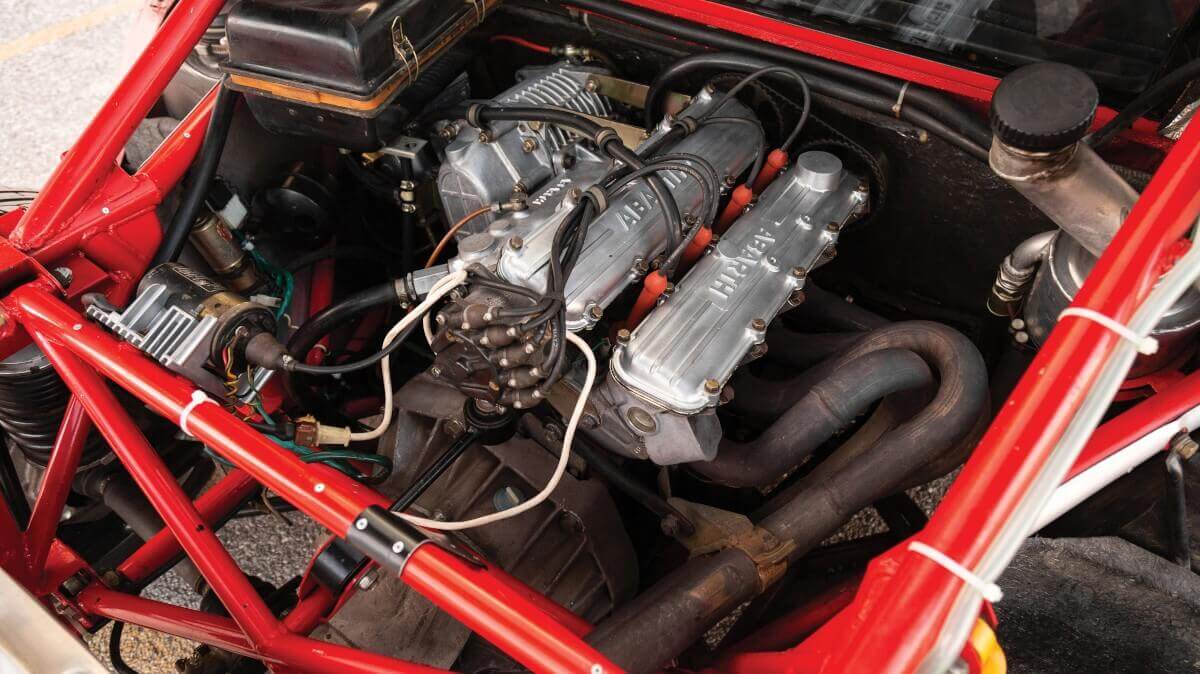















Today, the few well-preserved Lancia Rally 037 are sought-after collector’s items. Of course especially those works cars with rally history reach high prices, but also the value of the Stradale version increases noticeably. So it’s not surprising that the car with the chassis number 0057, which we show in our picture gallery, has expected hammer price between US$ 475,000 and US$ 600,000 when it is auctioned by RM Sotheby’s at the end of the week during the Monterey Car Week. Painted in the typical color ‘Rosso Corsa’ this car originally belonged to Giancarlo Gianetti, whose company L.M. Gianetti in Turin developed and supplied various suspension and engine parts for the Lancia Rally 037. Because of this, Abarth installed an upgrade to the Corsa specification to this vehicle, with an increase in displacement to 2.1 liters, a special crankshaft, modified pistons and connecting rods, a larger cylinder head with larger valves and a rally camshaft. On the factory test bench, this engine achieved 252 hp. In order to keep up with the higher performance, 0057 received a stronger clutch and extra hardened gears. The radiator on the new front subframe came from the Evo 1 rally version, the brakes from the Evo 2.
To date, this Lancia Rally 037 Stradale has covered just under 6,600 kilometers on public roads with its three previous owners. If a new, fourth owner should be found in Monterey, he or she will receive all original books and documents including a letter from factory test driver and rally team director Giorgio Pianta regarding the modifications carried out in the factory before the first delivery. It remains exciting to observe whether the Lancia meets the price expectations set in it.
Images: RM Sotheby’s




